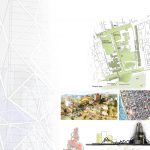
 Winning an award dedicated to honor the excellence in ones profession not only proves the winner worthy but proceeds to set a benchmark higher than the last for future achievers. It provides not only as a physical element representing merit but also will encourage the advancement of greater excellence by the future achievers.
Winning an award dedicated to honor the excellence in ones profession not only proves the winner worthy but proceeds to set a benchmark higher than the last for future achievers. It provides not only as a physical element representing merit but also will encourage the advancement of greater excellence by the future achievers.
This issue focuses on the Geoffrey Bawa Awards given by the Geoffrey Bawa Trust for Excellence in Architecture. The Geoffrey Bawa trust has set up a national awards scheme where exceptional contributions to architecture are acknowledged. The aim of the award is to identify and credit innovative and dynamic solutions in architecture. The award scheme does not expect the works of those entering to echo the work of Geoffrey Bawa, but to show innovation and creativity with excellence in execution and in practice. It is through these qualities that the award winners and the participants will reflect the same achievements of Geoffrey Bawa himself.
All architecture is subject to examination; in the past the award criterion states that the projects in question must be tested on utility firmness and delight. The criterion of utility examines the building to assess if it is suited for the function it is built to serve, whereas firmness shows the contextual response, how it has been built suited to its surroundings and if the material chosen suitable for the purpose and its technical capability to exist in the given environment. The final decisive factor of delight tests the building on its ability to please the eye and if the building is able to extract a spiritual response from the visitor. In today’s society we see allocation given to sustainability because it has become a trend, because we are running out of fossil fuel and because we have no other choice but to do so to ensure the availability of power for future generations to come, and because of these reasons the projects are looked at with close scrutiny to assess its sustainable responsiveness.
From all the entries the short listed projects are thus examined on the above mentioned parameters. They are expected to have a suitable balance of the above and this is assessed by means of a visitation by a technical committee. The committee will interact with the architects of the listed projects, the clients and building and formulate a final judgment based on the overall experience.
As important as it is for a professional to be recognised through good work, it is further a social duty to expose the public to the same. The eight shortlisted projects have been presented in this magazine in order to promote the production of such work from the future generations of architects and to ensure public awareness of its existence.
Peshali Perera











